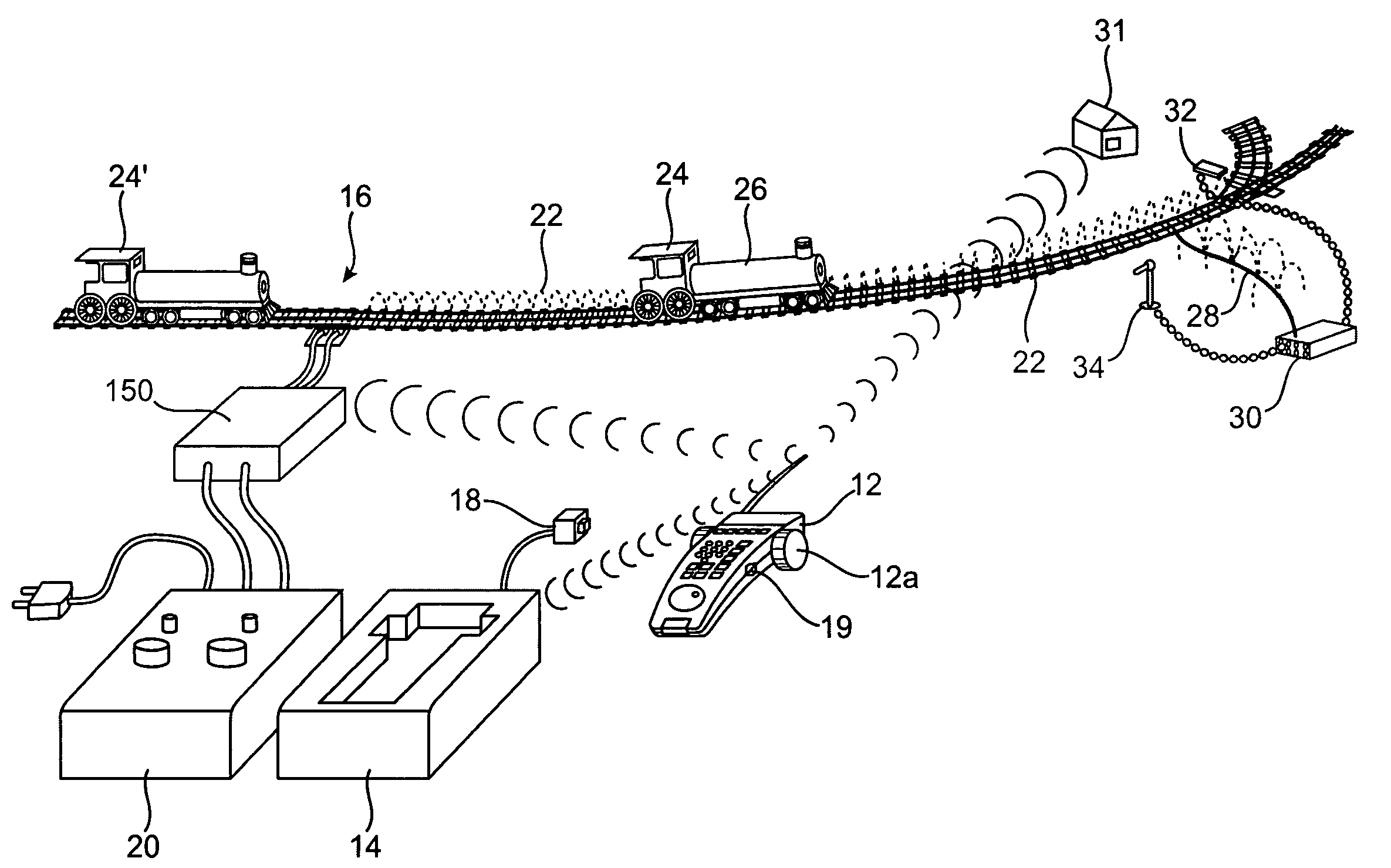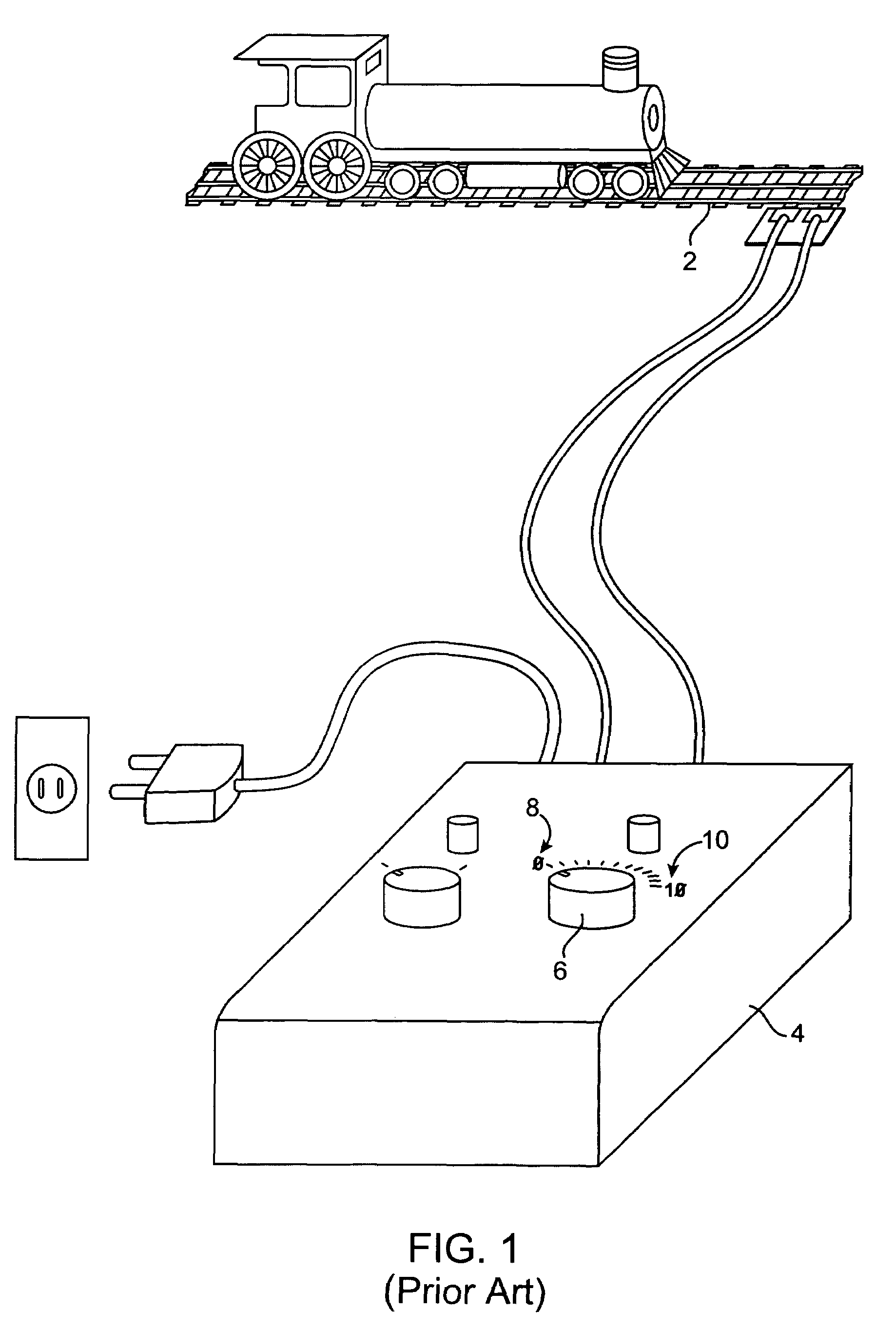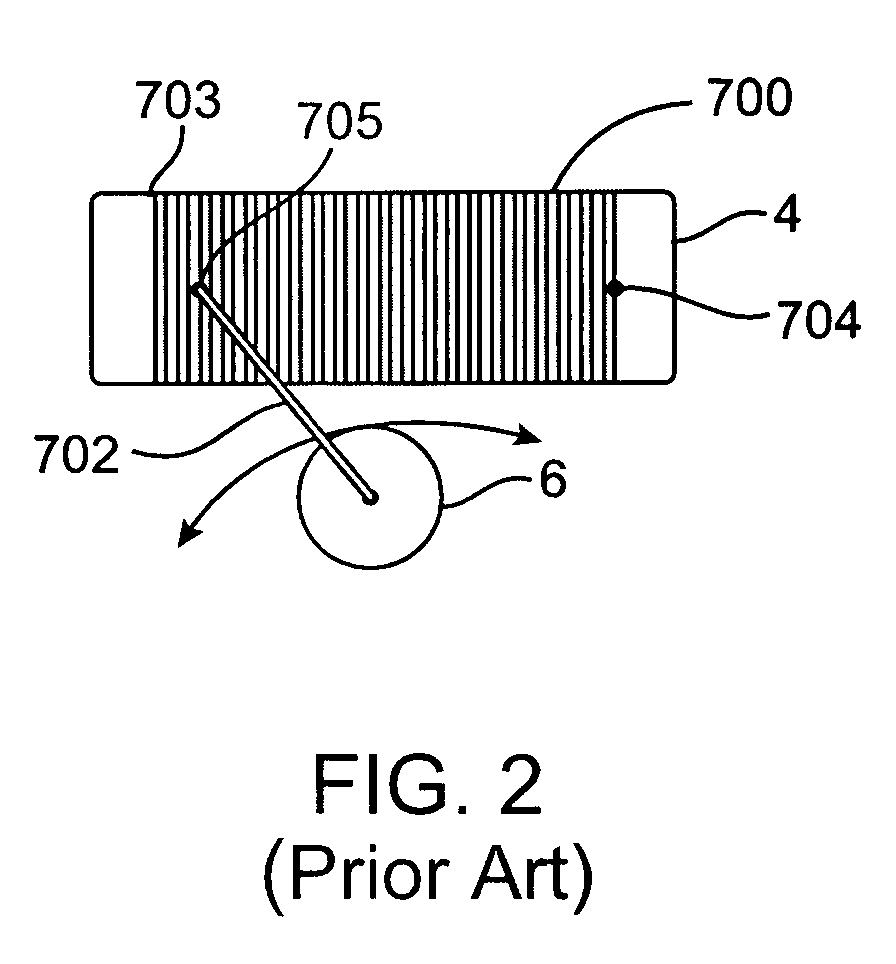Model railroad velocity controller
a controller and model technology, applied in the direction of programme control, instrumentation, dynamo-electric converter control, etc., can solve the problems of increasing the voltage and thus the power available, physical manipulation of the control knob, and delay the response between the train speed and the controller, so as to control the velocity of the model train, shorten the elapsed time between pulses, and increase the power communicated to the train
- Summary
- Abstract
- Description
- Claims
- Application Information
AI Technical Summary
Benefits of technology
Problems solved by technology
Method used
Image
Examples
example train layout
[0058]FIG. 4 is a perspective drawing of an example layout of an alternative train track system. A hand-held remote control unit 12 including control knob 12a is used to transmit signals to a base unit 14 and to a power master unit 150, both of which are connected to train tracks 16. Base unit 14 receives power through an AC adapter 18. A separate transformer 20 is connected to track 16 to apply power to the tracks through power master unit 150. Power master unit 150 is used to control the delivery of power to the track 16 and also is used to superimpose DC control signals on the AC power signal upon request by command signals from the hand-held remote control unit 12.
[0059]Power master unit 150 modulates AC track power to the track 16 and also superimposes DC control signals on the track to control special effects and locomotive 24′. Locomotive 24′ is, e.g., a standard Lionel locomotive powered by AC track power and receptive to DC control signals for, e.g., sound effects.
[0060]Bas...
PUM
 Login to View More
Login to View More Abstract
Description
Claims
Application Information
 Login to View More
Login to View More - R&D
- Intellectual Property
- Life Sciences
- Materials
- Tech Scout
- Unparalleled Data Quality
- Higher Quality Content
- 60% Fewer Hallucinations
Browse by: Latest US Patents, China's latest patents, Technical Efficacy Thesaurus, Application Domain, Technology Topic, Popular Technical Reports.
© 2025 PatSnap. All rights reserved.Legal|Privacy policy|Modern Slavery Act Transparency Statement|Sitemap|About US| Contact US: help@patsnap.com



